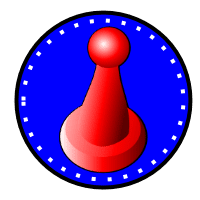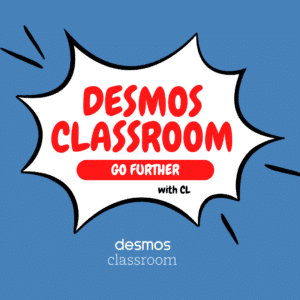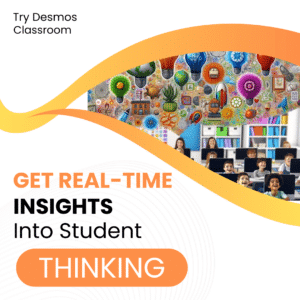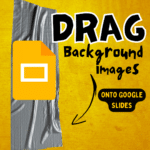
If you want to get started using Gamification in the classroom there are so many things you can try. Giving students choice, using badges to recognize student accomplishments, providing a narrative or theme to assignments and units are a few ways to get started.
Start Small
It is easy to get overwhelmed. Whatever you do you need to make sure it is sustainable for the entire school year. Using gamification techniques can increase student motivation but the opposite will happen if you do not sustain the gamification elements. Research shows you can not stop giving rewards once you start giving them. You need to be able to be consistent and persistent in offering the choices, badges and narratives. If you want to offer badges, have no more than 5 at any time that students can earn. The record keeping and awarding of badges can become too much data to track and you might want to give up.
Figure Out Systems
If you are just getting started with gamification or new elements of gamification expect to learn through failure (another key gamification technique). It will take some time to figure out best practices. I find that spreadsheets and Google Forms are really helpful for me in my gamification endeavors but you will need to find what works for you. Starting small gives you time to figure out workflows and what the kids respond to.
Slowly Expand
Once you are feeling comfortable with a particular gamification technique and have useable workflows try expanding what you are currently doing or adding additional gamification techniques. One thing we learn from playing games is that other than having a goal there are no required elements to a game. Some games have points, others do not. Some games have timers, others do not. Some games have competition, others do not. How you design gamification into your class does not have to be any particular way. Even adding one small gamification technique can make class more fun and more motivating for students.
Try Digital Gamification Tools
Exploring the world of digital gamification tools can elevate your teaching strategies and provide a world of new opportunities for student engagement. There are countless platforms out there that can facilitate the integration of game-based learning, and one example is BookWidgets.
Make Gamification Sustainable: A Teacher’s Guide
Gamification in education is more than just a trend; it’s an innovative approach to engaging students, enhancing learning experiences, and achieving educational goals. As educators, we all want to create a classroom environment that is dynamic, engaging, and most importantly, effective. By employing game-based elements into learning, we can certainly create a more interactive and immersive learning environment. However, to sustain gamification over the long term, we must ensure it is effectively integrated, managed, and continuously evolved. Here are some strategies to make gamification sustainable in your teaching practice.
1. Align with Learning Objectives
Any gamified activities should first and foremost align with the learning objectives. Games should not be included just for the sake of it; they need to serve a specific educational purpose. Consider the skills or knowledge you want your students to gain and design or choose games that reinforce these objectives. This fundamental alignment will guarantee that gamification remains a critical part of your pedagogical toolkit, rather than a one-time gimmick.
2. Balance Competition and Collaboration
While competition can be a strong motivator, too much can lead to disengagement among students who continually find themselves in lower-ranking positions. Balance competition with collaborative activities where students need to work as a team to reach a goal. This approach fosters an environment where everyone can succeed, and it can reduce the stress of constant competition, making gamification more sustainable.
3. Provide Meaningful Feedback
Feedback is a crucial part of any learning process, and it’s no different in a gamified environment. Providing meaningful and timely feedback helps students to understand their progress, learn from mistakes, and feel motivated to continue playing and learning. Digital badges, leaderboards, progress bars, and other visual indicators can be excellent tools for immediate feedback in a gamified system.
4. Diversify the Game Elements
Using a variety of game elements keeps things fresh and engaging for students. Just as you wouldn’t use the same teaching method for every lesson, don’t rely on one type of game for every learning objective. Incorporating a mix of quizzes, puzzles, simulations, and role-playing activities can cater to different learning styles and keep students looking forward to the next challenge.
5. Encourage Student Ownership
One key way to ensure the sustainability of gamification is to allow students to have some ownership in the process. This could involve students creating their own games, setting personal learning goals, or deciding how to approach a challenge in the game. Empowering students in this way not only boosts engagement but also supports the development of self-regulated learning habits.
6. Continuous Adaptation
Just like any teaching approach, continuous adaptation is essential to keep gamification effective and sustainable. Monitor how well the games are working, gather feedback from students, and be prepared to make changes as necessary. The beauty of gamification is its flexibility and its potential to evolve along with your students’ needs and interests.
7. Professional Development
As with any educational tool, mastering the art of gamification requires ongoing learning and professional development. Stay updated on new games, tools, and methodologies by attending workshops, joining online forums, and reading recent research. The more you know, the better you can harness the power of gamification in your classroom.
Gamification in education is not just about adding games to the classroom; it’s about creating an interactive and engaging learning environment that motivates and excites students. By ensuring that your gamified activities are purposeful, balanced, diverse, and adaptable, you can maintain their effectiveness and keep students engaged for the long term. Remember, the ultimate goal is not to make learning feel like a game, but to use the elements of games to enhance and enrich
- Empowering Young People to Take Action – @VictoriaTheTech Favorite Microsoft Educator Center Courses
- Articles
- Every Lesson is a Search Lesson
- Make Badges with Google Apps
- Teaching my Daughter to Search
- Chrome for the Classroom: Essential Updates Every Teacher Should Know
- 30 Keyboard Shortcuts That Teachers Need
- Hide All Tabs – Google Sheets
- Transform Your Lessons: The Power of Desmos Classroom Computation Layer
- Get Real-Time Insights into Student Thinking
-
Chrome for the Classroom: Essential Updates Every Teacher Should Know
Chrome is always improving. If you use Chrome for the classroom you will want to check out these essential updates.
-
30 Keyboard Shortcuts That Teachers Need
The secret to feeling more confident on the computer is keyboard shortcuts! Here are 30 Keyboard Shortcuts That Teachers Need
-
Hide All Tabs – Google Sheets
Have a lot of tabs in your Google Sheets spreadsheet? Here is how to hide all tabs at once, quickly.
-
Transform Your Lessons: The Power of Desmos Classroom Computation Layer
Take Desmos Classroom even further with the computation layer. Customize your lesson with the CL.
-
Get Real-Time Insights into Student Thinking
Desmos Classroom is a FREE tool that allows you to gain real time insights into student thinking during a lesson.
-
Analyzing AI Created Rubrics Essentials for Teachers
Analyzing AI Created Rubrics: Discover the critical elements of effective rubrics and how to assess the quality of AI-generated options.













